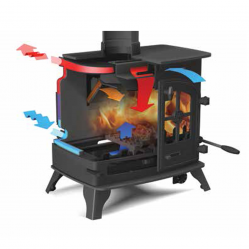OBSOLETE - Yeoman CL7 Inset High Output Boiler Stove

Technical Details
| Product Title | OBSOLETE - Yeoman CL7 Inset High Output Boiler Stove |
|---|---|
| Energy Efficiency | A |
| SIA Ecodesign Ready | No |
| Output (Nominal) | 7kW |
| Output (Maximum) | 10kW |
| Smoke Control (DEFRA) | No |
| Boiler Stove | Yes |
| Colour | Black |
| Flue Outlet Size | 150mm - 6in |
| Fuel | Multifuel |
| Height | 563mm |
| Width | 385mm |
| Depth | 563mm |
| Nominal Output (Range) | 7kW - 9kW |
| Width (Range) | 300mm - 400mm |
Reviews
Boiler Stoves > Inset Boiler Stoves

Inset Boiler Stoves
Our range of inset boiler stoves are a perfect solution for homes where floor space is limited and having a free-standing appliance is not an option. Designed to fit into an existing chimney breast or false wall, these stoves are still capable of producing just as much heat and hot water when compared to their free-standing equivalents, but they are designed in such a way that much of the appliance and pipe work is concealed behind the wall and in the chimney breast. We supply a wide range of inset boiler stoves, from traditional to contemporary designs, low and high nominal outputs, and a variety of sizes. Our inset boiler stoves are also available in wood or multifuel options, depending on your fuel preference and all these stoves have very high efficiency ratings, so you can get more heat for your money.



